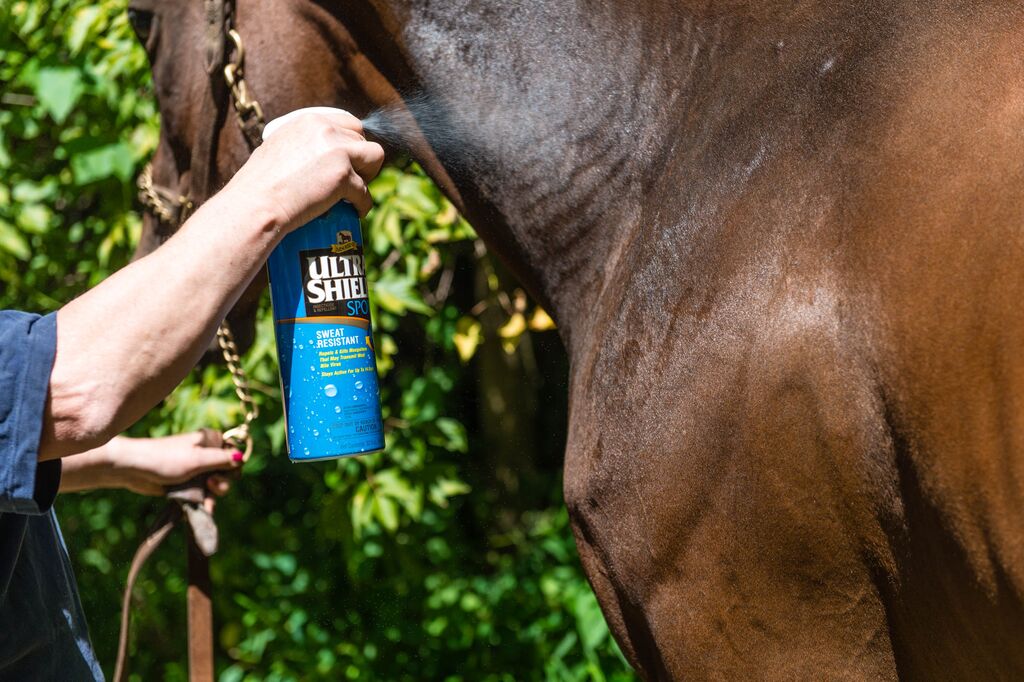
When your horse is stomping his legs, flipping his head and wriggling his skin to minimize insect attacks on his body, it’s easy to reach for the spray bottle of insecticide to improve his comfort. Use of chemicals as insect repellents is commonplace for horse owners, but it’s important to know just what you are putting on your horses to keep the pesky insects at bay.
There are many products on the market, but most use a common active ingredients of either pyrethrins or pyrethroids. Both compounds are intended to address flies and gnats through adverse effects on the insects’ nervous systems, and some are also effective against mosquitoes.
Pyrethrins
Pyrethrins are derived as an extract of the Chrysanthemum plant, used for its ability to ward off insects. This “natural” chemical is quite safe to use, but it doesn’t last long because ultraviolet from the sun breaks down the chemical. Many preparations with pyrethrins also include piperonyl butoxide as a synergist to improve effectiveness. Some also contain sunscreen to block ultraviolet breakdown of pyrethrin so it lasts longer.
Pyrethroids
The pyrethroids are synthetic compounds similar to pyrethrin. These include cypermethrin, permethrin, resmethrin and prallethrin. Chemists have improved chemical stability of pyrethroids compared to natural pyrethrins so that topical application lasts up to a few days. However, sweat and rain can wash off the insecticide, necessitating reapplication.
Before purchase or application to your horse, check the bottle for listed active ingredients, concentration and target pests. Higher concentrations of active ingredient result in longer duration of effects. Concentrations of pyrethrins and pyrethroids vary: 0.05% to 0.50% to 1%. Spot-on pyrethroids might be as high as 40% concentration. Read labels on the insecticides you plan to use and apply per manufacturer’s recommendations.
Citronella is another natural insect repellant that is non-toxic. Extracted from the lemongrass plant, it is most effective against mosquitoes. It does require frequent application.
Eucalyptus oil, another natural repellent, is used for its pungent odor that confuses mosquitoes as they hunt for their target’s location. Another natural repellent sometimes used against mosquitoes is geraniol from geranium plants.
Keep in mind that pyrethroids are toxic to cats, bees, water insects and fish. When applying insecticides to your horse or elsewhere in the barn, caution should be taken to avoid contamination near aquatic habitats, barn cats or flowering plants. Don’t spray these chemicals on the horse’s face; instead, wipe them on with a cloth, keeping well away from the eyes. Also, don’t apply insecticides directly to open wounds.


